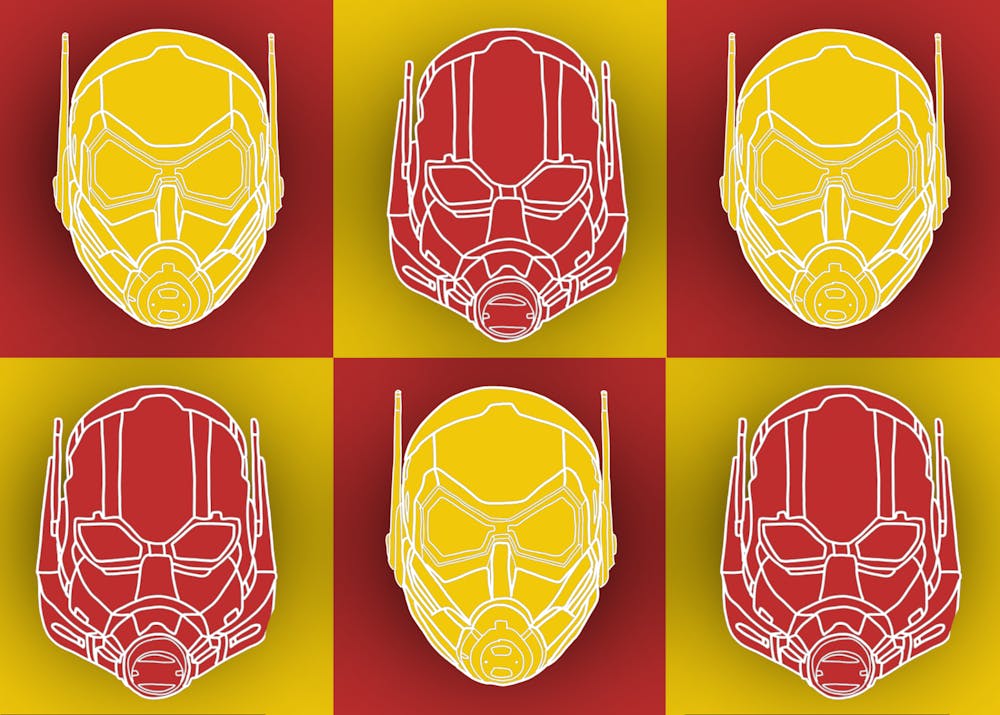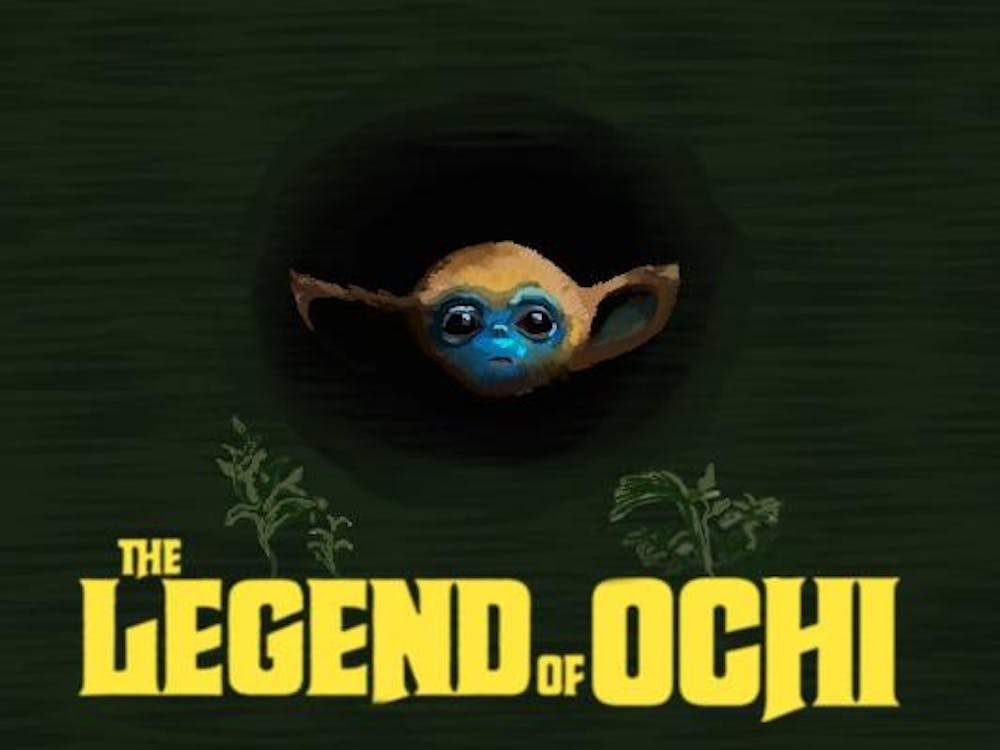“Ant-Man and the Wasp: Quantumania” brings a new formidable villain to the Marvel Cinematic Universe — insect-themed heroes Scott Lang and Hope van Dyne, played by Paul Rudd and Evangeline Lilly, return to the screen to battle him in the bizarre and unearthly Quantum Realm. Unfortunately, the audience is not given nearly enough to take the conqueror, the subatomic world or even the film itself seriously.
The third movie in the Ant-Man series sees the superhero struggling with familial relationships and the usual household drama — Lang, also known as the Ant-Man, feels disconnected from his teenage daughter Cassie, played by Kathryn Newton, after having been absent for years trapped in the Quantum Realm.
However, when a science experiment goes wrong, Lang and Cassie — along with van Dyne and her parents, played by Michelle Pfeiffer and Michael Douglas — are sucked into the microscopic alternative universe. There in the midst of alien tribes and bad CGI, they find themselves wandering amongst the strange locals and facing the dimension-hopping and all-powerful tyrant Kang the Conqueror, played by Jonathan Majors.
With so many directions the film seems to want to take — setting up Kang as the new Avengers-level threat for the next phases of the MCU, showcasing Lang’s role as a father and exploring the Quantum Realm — “Quantumania” feels like it’s collapsed in on itself and ultimately fails to fully achieve any of them.
Despite Majors’ commendable efforts in making Kang the intimidating and enigmatic antagonist, the third act of the film disparages any apprehension the audience may have held for him. Though the film never explains what exactly Kang’s powers are — another fault of “Quantumania” — it is clear that he was a mismatched foe for Lang. His chilling presence comes off as almost silly rather than disquieting in context of the absurd humor and smaller-scale story that the previous Ant-Man films carry.
By the end of the runtime, Kang the Conqueror seems too large a presence to have been shoehorned into a standalone movie for a character so minor in the scope of all of the Avengers. The weight of introducing Kang to the big screen dragged the film down and convoluted the plot, leaving behind an unsatisfactory mess of half-developed themes executed with disappointingly little commitment.
This negligent writing unfortunately carries over to other characters as well. Most notably, the Wasp felt pushed far too much to the side to the point where audiences are left to wonder why her name is in the title of the film. Despite the talents of Rudd and Newton, the father-daughter relationship felt exceedingly basic with the emotions buried too deep in the cliches of comical screenwriting to care.
Also contributing to the lack of character development is the editing style, which hard cut from one group of characters to another so frequently that scenes rarely felt finished and audiences couldn’t help but feel whiplash. The technicalities behind “Quantumania” not only made the film feel rushed and incohesive, it also left much to be desired in terms of visuals.
With the Marvel Cinematic Universe now expanding to utilize the colossal concept of the multiverse, audiences were taken inside the much anticipated Quantum Realm — an infinitesimal world filled with swirling colors and looming but vacant threats. The darkly ominous hues, fractal shapes, biomorphic organisms, streams of fire and strange beings seem to have no creative rhyme or reason, and the environment as a whole felt underwhelmingly dull.
Without the world-building to support the customs and quirks of the Quantum Realm, an entire universe was relegated to cheap green screens and CGI — a problem previously seen in Marvel’s previous multiverse film “Doctor Strange in the Multiverse of Madness.”
After both the critical and box office success Marvel had seen with “Avengers: Infinity War” and “Avengers: Endgame,” there has undoubtedly been an influx of new projects from the franchise in an attempt to usher in an even larger phase of films with new heroes and villains.
However, Marvel has overused its formula. Its signature off-beat humor no longer works as characters stop battling to say quippy lines that reveal lazy writing rather than work as comedic relief. While the stakes in the new films feel large, Marvel seems to be obstinately determined to not let anything of real consequence happen to their beloved characters, making the new threats feel empty.
The Marvel Cinematic Universe has grown so massive that it is no longer enough for an Ant-Man movie to just be an Ant-Man movie. Rather than simply being an enjoyable film, “Quantumania” suffers from being used as a feature-length commercial for future Marvel releases.
Sticking too closely with its blueprint of forced corny dialogue, overly conventional storylines, unreasonable plot armor and — now with the Multiverse saga — unspecial visuals, there is nothing that differentiates “Quantumania” from the hodgepodge of other Marvel films, except that the faults are so glaringly obvious that audiences can’t help but leave with a twinge of disappointment.







